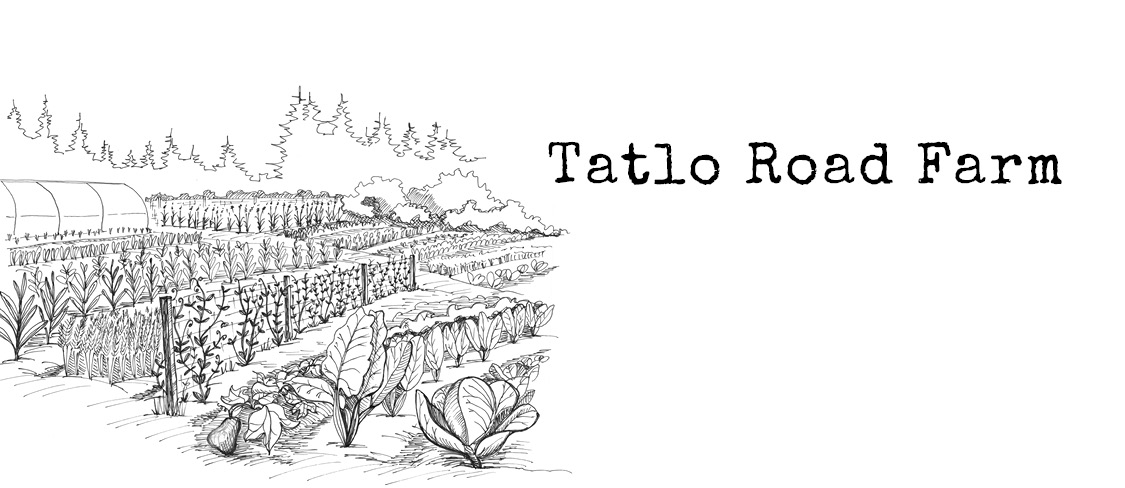Farmers are Designers
At the farmer's market we regularly receive compliments about how we display of our vegetables. My husband likes to respond with the quip, "I should hope so! We both have master's degrees in design!" While we have put some careful thought into how we display and market our vegetables, the display is only as beautiful as the produce it presents... And our vegetables are the product of our farm- the direct result of the functions and systems we have designed on the ground.
At its core design is about problem solving. Faced with a challenge, the designer creates a solution. This solution can be a product such as a building or a website, or it can be a process such as a bus route or a record-keeping system. Farmers are solving problems everyday, from the simple ("we need a better way to open the greenhouse doors") to the complex ("how do we efficiently integrate our irrigation and drainage systems"). From the challenges of crop planning and rotation, to soil and water management, to farm economics and marketing- farmers are constantly designing solutions to the myriad problems they face. Their solutions are often ingenious (and thrifty), solutions based on knowing a place and a task intimately.
Another quality of design is that it be beautiful- not simply for aesthetic purposes, but because good design is beautiful in the way a mathematician describes the beauty of an equation. It is the beauty of efficiency and function. Good design is all these things: efficient, functional, and beautiful.
I cannot think of a more beautiful thing than an efficiently running, sustainable farm.
When applying to do a master's in landscape architecture one of the questions I had to answer was "What is your favourite landscape?", to which I replied, "The agricultural landscape..." And here I find myself on the other end of it all farming, creating the landscape that inspired me to study design in the first place. I do still love this landscape more than any other, as it is such a direct example of the human place in our local ecosystem. We have to eat. We are an agrarian society. So a farm that is modelled on an ecosystem, designed to nurture healthy plants and animals- while working with the air, soil, and water in a way that is beneficial and sustainable- is one of the most direct examples of humans taking their place within an ecosystem, rather than pretending to be separate from it. Such a farm is the culmination of hard work, thoughtful design, and careful planning. And it is beautiful, it is efficient, it is thriving with life.
I still consider myself a designer, perhaps I am farmer first but the "designer" is implicit. To those who question whether I use my graduate degree I say "Yes!" In fact, I feel privileged that I am able to partake in the ultimate design project- the design of just one place over a lifetime; and not just "on paper", but a design that we then implement and test and refine. After three years of building this farm I feel as though I know this place intimately, while simultaneously feeling like there is so much to discover here. The other reality for the farmer/designer is that her work is never done; problems evolve, new challenges arise, and she is tasked with finding ever more beautiful, creative solutions.
One last note on design: you may have noticed a slightly updated look to our website. It's subtle, but as farmers/designers subtle things matter to us. As part of this change we have made the blog portion of the new website secondary, but with this shift we intend to treat to blog, well, more blog-like (i.e. opinionated!). So stay tuned as we look forward to sharing more of our thoughts on food and farming...
